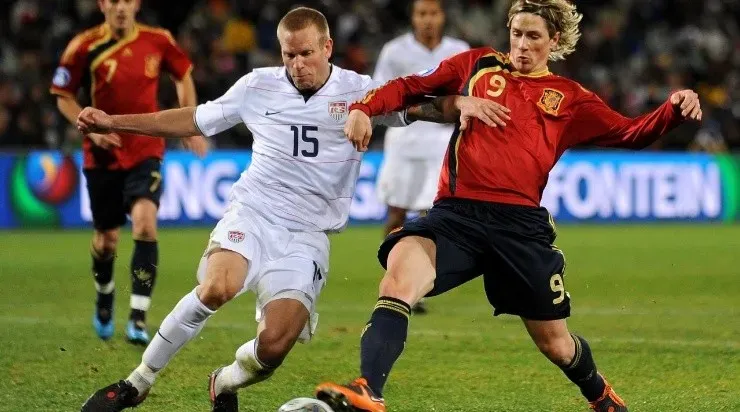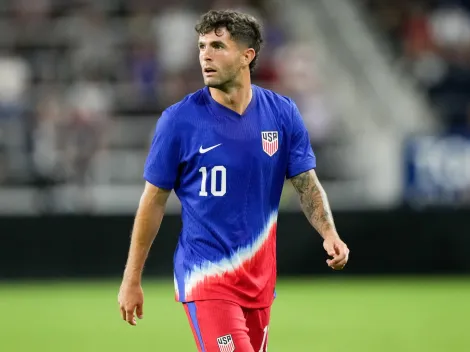The United States will play in the Concacaf Nations League Final on June 6th against bitter rival Mexico for regional supremacy. The team head coached by Gregg Berhalter went to the final trying to play out of the back and possession-based soccer. For the most part, on paper, it worked, the American’s out possessed Honduras 60-40, but didn’t outshoot them (6-6) and were only able to win 1-0 on a late goal by Jordan Siebatcheu. Mexico fared no better, despite all their talk about being the power of Concacaf they only managed a penalty kick shootout win over Costa Rica, a team that has not won since 2019.
Style seems to be what the USSF is after, playing attractive soccer is the key to fulfilling the federations quest to be accepted as a legitimate rising power and a marketing tool to promote homegrown talents of the game.
Steven G. Mandis, who has authored two books, one focused on Serie A and its decline in the early 2000s and What Happened to the USMNT: The Ugly Truth About the Beautiful Game. Mandis concludes that it is not for a lack of talent that the United States has not yet met its goal, but rather arrogance on the part of the federation.
From underdog to arrogance

Matt Besler of the United States mens national team reacts as the USA lose to Trinidad and Tobago 2-1 during the FIFA World Cup Qualifier match (Getty)
In 1989 when the United States had to play Trinidad and Tobago to qualify for the 1990 World Cup in Italy, it was just an accomplishment just to beat the small Caribbean nation. The United States had a group of players made up of mostly college students. Fast forward to 2017 and the general view was that the United States were forced to qualify by playing Trinidad and Tobago under less than professional conditions. Many pundits pointed to the team as arrogant for not taking the match seriously, the result was a disgraceful defeat that left, at the time, one of the most talented groups the USMNT ever had out of the World Cup.
A far cry from the counter attacking game that brought success to the United States in the 1995 Copa America, 2002 World Cup, 2009 Confederations Cup, and 2010 World Cup. The US were anything but proactive in their 2014 World Cup where they stumbled to the second round.
From Grit to Tiki Taka

The grit of the United States proved successful as Bob Bradley’s team defeated Spain 2-0 in the 2009 Confederations Cup. (Getty)
According to Mandis the United States had a style of play that has been altered in recent years, “the United States had an identity of grit and counter attacking play, and a mission to prove the legitimacy of soccer in the United States. Over time what happened was the word “legitimate” meant you needed to play like and be like Europeans. And that was a flawed thinking…”
Today one looks at the global landscape and European influence is heavy on national teams, especially those of the Americas. More and more players leave for Europe at a younger age, many of them never playing a single game in their home country’s domestic league as is the case with Gio Reyna and Christian Pulisic.
According to Mandis the USMNT already had an identity in place and was relatively successful, by using grit and being the underdog. Mandis book tackles the issue that “playing European is showing progress, but why is that showing progress?” Mandis was able to speak to Diego Simeone, head coach of Atlético de Madrid, who pointed out “why play one way against a smaller opponent and a different way against Real Madrid?” Simeone stressed that they needed their own identity and not be ashamed of it.
In the end Simeone’s approach is the thesis of Mandis book, “it’s the ugly truth of the beautiful game, you can win in any style. This idea of being like Spain for example is complex, we (US players) don’t learn the game like they do.”
European influence

Giovanni Reyna of Borussia Dortmund (Getty)
Today if you look at Major League Soccer the influence of European soccer is everywhere in the team names that end in United, City, or Football/ Soccer Club. In the days of the NASL soccer was done the American way and teams like the Chicago Sting and the New York Cosmos had a touch of Americana, although the NASL was not the proper way to go about the sport.
Former USMNT coach Jürgen Klinsmann spoke to Mandis and stated that the United States needed to be “proactive and aggressive.” US Soccer disassociated from the nations counter attacking approach, because it did not show progress. The end result was missing out on the 2018 World Cup and 2021 Summer Olympics.
The debate continues to range on as to where the USMNT need to go in terms of style, today fans, mostly bombarded by seeing only the best teams in the World on television, want the USMNT to play a style that is not American, while the USSF does everything they can to appease new fans, while forgetting the successful formula of the past.
USMNT: The Ugly Truth About the Beautiful Game is an interesting read for those who want to understand the cultural importance of soccer, and how a style of play is truly developed. Styles of play are not forced but rather built, on results, personality, and geography.





